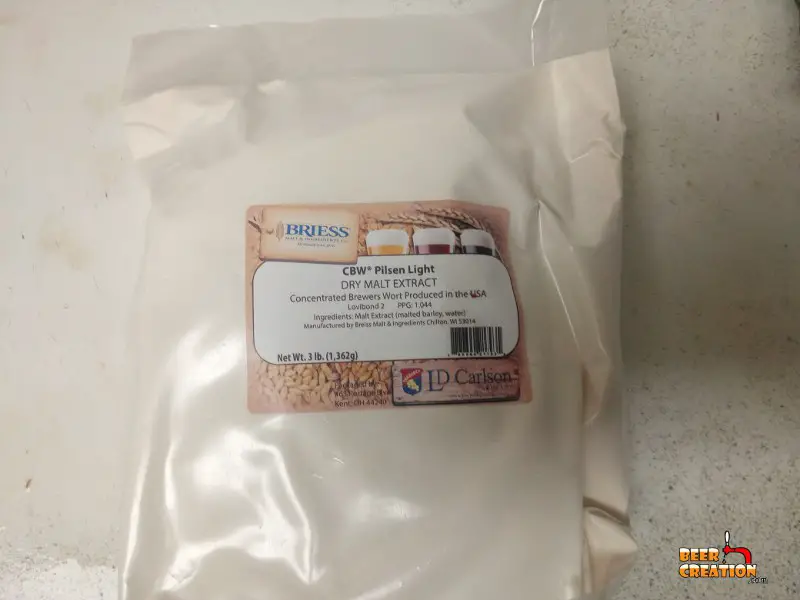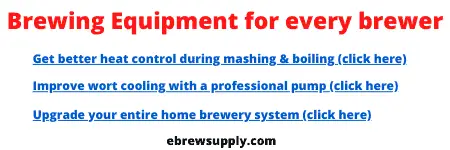If you’ve ever read John Palmer’s book “how to brew” you’ll instantly be confused as to when you should use liquid malt extract (LME). This is especially true if you are following a standard extract recipe kit.
So, when exactly should you add the LME, and does it affect your finished beer that much?
There are 2 ways to use LME, either by adding the entire can to boiling wort before starting the brew day schedule or by adding the bulk of the LME in the final 15 minutes of the boil. The risk with the former method is a darker beer due to caramelization, the latter may produce a more bitter beer.
The main issue with this question is that the answer depends on your skills as a brewer and how concerned you are with the quality of your beer.
If you want to understand exactly what will change if you alter when you add extract to your wort, then please carry on reading as I’ve gone through some key concepts you should know.
But let’s make sure we all start off on the same page.

What is Liquid Malt Extract & how is it made?
Liquid Malt Extract is made by mashing malt grains in a conventional way, then dehydrating the resulting wort until only about 20% of the liquid remains. This produces the syrupy sugary extract which you find in the can in your kit.
Dry Malt extract is made in exactly the same way except that it goes through an additional phase of dehydration to produce a powder rather than a liquid extract.
Using LME for extract brewing
LME and its dry counterpart (Dry Malt Extract – DME) are used in extract brewing kits to substitute the extraction of sugars during the conventional mashing phase found in all-grain brewing.
Instead of spending that additional time getting the perfect amount of fermentable sugars out of your malt grains, an extract brewer simply needs to open a can or a bag and pour the contents in.
So, this means that the correct time to add the LME or DME is when your wort is already boiling and just before you start your brew day schedule by adding your hops bill.
Most kits will direct you to first seep your specialty grains, usually provided in most kits for added flavor, then boil the newly made wort before adding your LME. However, this isn’t always the easiest thing to do when brewing alone.
Tips for using LME better
For me, the biggest issues I used to have when using LME were certainly because I was usually brewing on my own.
The main issues I used to face when adding LME to boiling wort were:
- LME which didn’t pour well
- not being able to empty out all of the LME from the can
- burned or caramelized LME on the bottom of the brew kettle
Tip 1: Get your LME to pour better
Although some recipes and kits will tell you to run the cans under hot water for a while, I found it much more effective to actually sit the cans in a pan or bucket of boiling water.
Do this for about 5 minutes before you need them. Also, try to remove the label before it gets wet to avoid tearing off small pieces with your can opener which could fall into your wort.
Tip 2: Extracting every last drop
Hot water helps here as well. Once the LME is warm it’ll be more viscous and should pour better. Pour out about half to three-quarters of the can then fill it up with boiling water to about halfway.
After giving it a good stir with a spoon, you should be able to scoop out every last bit of LME into your wort. Ideally, this should be done by your brew mate while you stir the wort or vice versa. If you brew alone, read the next tip.
Tip 3: Avoid burned LME
If you pour LME into your boiling wort it’s going to sink right to the bottom of the brew kettle and stay there. If you have a conventional brew kettle, that probably means that it will either caramelize or burn on the bottom of the pot. Obviously this is not what you want.
The likelihood of the LME caramelizing or burning on the bottom of the pot can depend on the type of brew kettle you have, for a full guide to what to look out for when buying your next brew kettle check out my article.
The main issue if you allow this to happen is that your beer’s quality and color will suffer. The Maillard reaction, which is a chemical reaction between sugar and amino acid, is what leads to the darkening of a beer due to caramelization.
If you are brewing in your kitchen and finding it a struggle, why not read my article: Tips For Boiling Wort On The Kitchen Stove (Gas & Electric)
So what can you do?
The best method is to make sure you have a long handle spoon and keep the wort moving as you pour it in. If you don’t have an automated way of doing this then it means using some elbow grease and enlisting the help of a brewing mate.
What if you are brewing alone?
Simply add the LME before the boil. Personally, I struggled for about 5-6 batches before I realized that I could just add the LME directly to my wort after I’d steeped my specialty grains.
Although the wort is still fairly hot, you shouldn’t have the heat on which will mean that the LME won’t start to burn straight away. You can, therefore, add the LME yourself, scaping out every last drop and start stirring as you add the heat.
This does mean that it takes a little longer to boil, but you can be sure that you won’t have any burned patches of sugar on the bottom of your kettle which you need to scrub away at later on.
However, some other brewers take a very different approach in order to improve the color and quality of their beer.
New to homebrewing? Please feel free to read my ultimate guide to brewing beer at home and where to start.
Late malt extract addition method
For most brewers, they will normally be adding their LME as a substitute for making their own fermentable sugars by mashing grains. Nevertheless, there is a method known as late malt extract addition which is used by brewers, especially to brew particular beer varieties.
In a nutshell, the late malt extract addition means that the brewer adds 75-85% of the extract in the last 15 minutes of the boil. Only about 15-25% is added at the beginning of the boil.
Why add LME later in the boil?
The main reason is again due to the Maillard reaction. In order to produce a lighter color beer and avoid the chemical reason which happens when you boil sugar with amino acid, the bulk of the extract is added later.
Although the fermentable sugar found in LME is mostly needed during fermentation, it still needs to be sterilized and this can be safely achieved within 15 minutes at the end of the boiling phase.
Drawbacks of the late extract addition method
As you will have a lower sugar to hops ratio during much of your boil, there will be a big difference in the finished beer compared to if you had added all the LME from the get-go.
Simply put, you will have a better efficiency when comes to extracting alpha acids from your hops, so your beer will be more bitter. This can be great if that’s something you like if it’s not your goal, then try reducing your overall hops bill by 20%.
What’s better? LME or DME?

In terms of the quality of the beer, I can honestly say that I have found no real difference in using LME or DME for extract brewing. Assuming that the extract you use is still viable, it then comes down to the ease of use.
DME is far easier to use if you need to weigh it and aren’t using the entire packet. However, if you are using the entire packet, then LME is far easier to add to boiling wort as it won’t clump up.
If you’ve ever noticed this when using DME you may be interested in the technical term, hygroscopic, which is the quality DME has of instantly sucking up any moisture it’s exposed to.
What can I use instead of malt extract?
This is a fair question to ask but you will be disappointed with the answer.
In order to make a true beer, you need the fermentable sugars which come from malt grains in order to get the flavor and characteristics of beer.
If you aren’t using LME or DME, then you will have to produce your own fermentable sugars by mashing your grains before boiling your wort and adding hops, basically the all-grain brewing method.
So, to my knowledge, there are no substitutes for LME or DME for an extract brewer.




